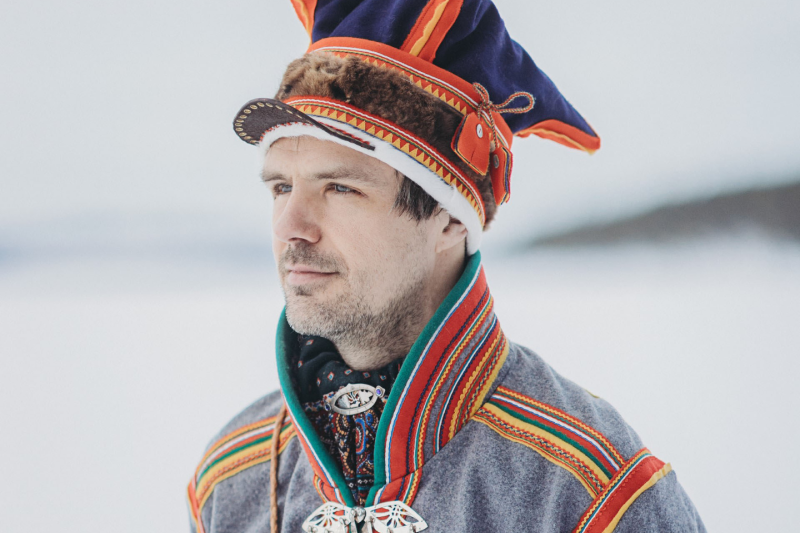Fredrik Prost

Fredrik Prost
Rationale:
Leŋges hearggi Sáhčal fatnasa is a diverse work of art. It’s both a guide to Sami traditional spirituality and a beautifully crafted and ornamented scientific narrative that hasn’t been told before – how to reclaim what has been said to be long lost; the use of Sami drums and the Sami’s close connection to nature. In the book, Fredrik Prost – who is a practitioner of duodji, Sami handicraft tradition – shares stories of Sami values and spirituality, which he has explored since becoming an adult. He talks about how he was chosen as a young man and about his quest for knowledge. As a framework around his narrative, he has woven in historical facts, information from contemporary sources, and also poetry.
When the book was released, professor of Sami culture and literature, Harald Gaski, stated the following: “A new Johan Turi has been born for the Sami people.” Similar to Turi, Prost employs a scientific method to narrate his experiences in prose form. The story begins with an event 300 years back in time, when the noaidi Nilja Lässi was imprisoned and burnt. Based on this event, Prost paints a comprehensive picture of the changes in the Sami society from the beginning of colonialism, with the prohibition of the Sami worldview, to the present day where decolonisation is a central concept in Sami society, and the public discourse on traditional Sami beliefs is starting to mature.
In the book, we follow Prost in his personal narrative; how he initially receives information from an older man who has been a well-known healer. “What has just been / What still lives in folk memory / Seems so far away / No one has mentioned / You have not heard / That it was just a little while ago” (p. 37).
He experiences being called to become a noaidi, finds spirits that assist him further, and eventually becomes a guide for others who are seeking. There is a well-known dramaturgy in the book where the main character struggles and faces obstacles before gathering wisdom and developing the ability to master new challenges.
Prost then gathers his knowledge about the Sami worldview and the connection with nature in book form so that other Sami people, especially those with special abilities, can access this knowledge. The renowned Sami artist Mari Boine writes in the foreword: “Imagine if I’d had this book,” she writes, recalling her youth when she searched for the path to our spiritual heritage.
The book is beautifully designed, and the designer and illustrator Inga Wiktoria Påve, the author’s life partner, has done an outstanding job. The beginning of each chapter features an illustration along the edge that alludes to duodji ornamentation, which is a delight to look at and sparks curiosity.
Throughout the book, the illustrations go hand in hand with the text, hinting at the invisible that not everyone is endowed with the ability to experience, because “Those who do not listen, do not hear / Those who do not see, do not perceive / Behind the mist, they whisper and chant softly” (p. 51).
The background of the text is illustrated with dark images in the dramatic personal passages, where Prost encounters obstacles and finds knowledge through spiritual exercises.
Each chapter concludes with a poem – or text from a joik – which leads the reader to reflect through the powerful means of poetry.
As a whole, the book is like a pearl that you simply don’t want to let go of and a copy should be found in every home.
The book raises thoughts about who has the right to manage Sami cultural heritage, both the material and the immaterial. This is relevant now as objects are being returned to Sami museums and as questions arise about who is responsible for revitalising what the Sami people have lost.
The author believes that it’s not enough for older objects to be returned to museums; there must also be a revitalisation of the use of these objects, such as Sami drums. That’s why he’s spent 20 years exploring and gathering knowledge about Sami spiritual tradition, crafting drums, and participating in preserving the art of the noaidi. In the author’s words, it’s as if the drums have now begun to speak and are urging us to listen.